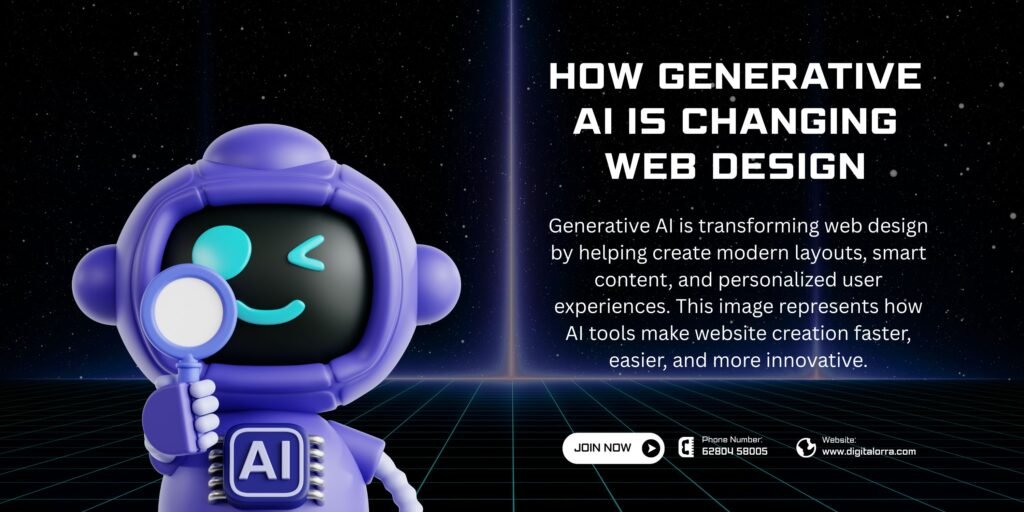Technology is moving fast, and Generative AI is now becoming a big part of how websites are designed. It helps designers create layouts, write content, and even build websites faster. In this blog, let’s understand how AI is changing web design and what you should know to stay updated.
What Is Generative AI?
Generative AI means artificial intelligence that can create new things — like images, layouts, text, videos, and even code — based on what you ask for.
In web design, it helps create designs, write content, suggest colors, and even make a website ready to launch.
Instead of starting from a blank screen, designers can now tell AI what they want — for example, “a modern website for a clothing brand” — and AI gives ready design ideas within seconds.
How Generative AI Is Changing Web Design
1. Faster Design Ideas
Earlier, designers had to spend hours creating layouts. Now, with AI tools like Figma or Framer, they can generate multiple website mockups just by typing a few words. This helps save time and boosts creativity.
2. From Design to Code Automatically
AI can now convert your design into real website code (HTML, CSS, and JavaScript). This means developers can start faster and make fewer errors.
3. Personalized Website Experience
AI can make websites smarter. It can show different layouts, content, or product suggestions based on what each visitor likes. For example, an online store can display items that match a shopper’s interests.
4. AI-Generated Content
Websites need content — headlines, descriptions, blogs, etc. AI tools can now write or suggest catchy lines, product descriptions, or even full articles. This helps businesses publish faster.
5. Less Repetitive Work
AI handles small tasks like resizing images, choosing color combinations, or testing mobile layouts. This gives designers more time to focus on creativity and user experience.
6. Quicker Testing and Changes
With AI, designers can test several versions of a web page and see which one works best. It helps make improvements faster.
Things to Keep in Mind
While AI is powerful, it’s not perfect. Here are a few important points:
- Don’t depend completely on AI. It can help with ideas, but humans still make the best design decisions.
- Keep your brand unique. AI designs may look similar across websites, so always add your own brand style and creativity.
- Check AI content. Always review and edit what AI generates to make sure it fits your brand’s tone and values.
- Be careful about copyrights. Some AI-generated images or text might use existing data, so avoid copying anything that isn’t yours.
How You Can Use AI in Web Design
If you are a designer or business owner, here’s how AI can make your work easier:
- Use AI tools to get design inspiration or quick layouts.
- Let AI write or improve your website text.
- Try AI coding tools to create simple web pages faster.
- Use AI to test different designs and improve conversions.
- Keep learning — new AI tools come out every few months!
Example
Imagine you want to make a website for your café:
- You type into an AI design tool: “Warm café website with coffee images and a menu section.”
- The AI gives you 3 layout options.
- You pick one and adjust the colors and fonts.
- AI writes a headline: “Brewed with Love, Served Fresh Daily.”
- Finally, AI converts the design into HTML and CSS code.
You get a ready website much faster — all you need to do is polish it!
The Future of Web Design with AI
In the coming years, websites will be:
- Smarter: They will automatically change based on visitor behavior.
- Faster to create: Designers will spend more time on creativity and less on coding.
- More personal: Every visitor might see a slightly different version of the same website.
Generative AI isn’t replacing designers — it’s helping them work smarter, faster, and better.
Final Thoughts
Generative AI is a game changer for web design.
It saves time, improves creativity, and helps make websites more engaging.
But remember — the human touch still matters. The best designs come from a mix of AI power and human creativity.
